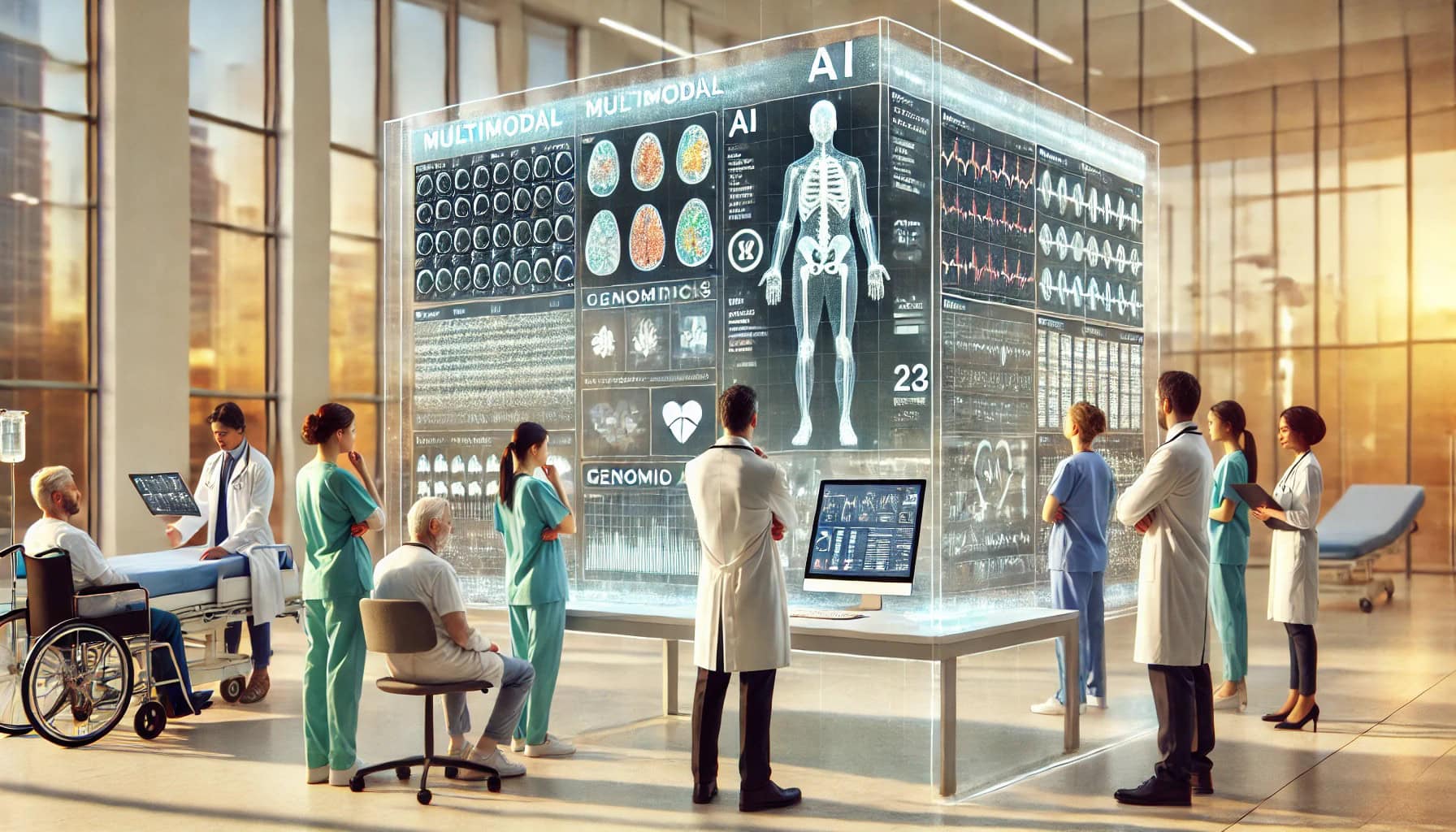In 1906, scientist Santiago Ramón y Cajal made a revolutionary breakthrough in neuroscience by doing something simple in retrospect: he combined different ways of seeing. By integrating microscopic observation with detailed drawings and theoretical insights, he revealed how neurons communicate with each other for the first time. His breakthrough came not from a single perspective but from synthesizing multiple types of information to understand a complex system.
Today, we stand at a similar inflection point in healthcare. Just as Cajal’s approach transformed our understanding of the brain, multimodal artificial intelligence (AI) is revolutionizing how we understand and treat patients. This new generation of AI systems doesn’t just analyze medical images or parse electronic health records in isolation—it integrates diverse data streams, like images, text, and numbers, to create a comprehensive view of patient health that mirrors how skilled clinicians think.
The Strategic Imperative
Healthcare leaders today face a pivotal decision in their AI journey. Many organizations have already implemented individual AI solutions—perhaps an algorithm that analyzes chest X-rays or software that optimizes electronic health records. However, these single-purpose tools, while valuable, capture only fragments of the complete clinical picture. The true transformative potential lies in multimodal AI systems that simultaneously process and integrate multiple data sources, from medical imaging and lab results to clinical notes and genomic data.
This isn’t merely a technical upgrade—it’s a strategic imperative that promises to reshape the fundamentals of care delivery and clinical decision-making. Multimodal AI mirrors how experienced clinicians work, integrating various types of information to form comprehensive clinical judgments. By combining imaging data with patient histories and genomic information, these systems can identify patterns and relationships that might be invisible when looking at any data source in isolation.
Beyond Individual Tools
Consider a complex oncology case. A traditional AI system might excel at detecting tumors in CT scans but miss crucial context from the patient’s genetic profile or treatment history. Multimodal AI bridges this gap by synthesizing information from multiple sources. In practice, a single system can simultaneously analyze a patient’s imaging studies, genetic markers, lab results, and clinical history to suggest more precise treatment options.
In surgical settings, multimodal AI transforms procedural precision by integrating real-time visual data with pre-operative imaging and patient information. For telemedicine, these systems enhance remote care by combining video consultation data with ongoing patient metrics and historical records, enabling more informed clinical decisions despite the physical distance.
The Leadership Challenge
Implementing multimodal AI represents far more than a technical challenge—it’s a fundamental leadership opportunity. Success requires a sophisticated understanding of how these systems can enhance rather than replace human clinical judgment. Leaders must navigate complex questions about workflow integration, change management, and ethical implementation.
The key lies in developing a strategic vision beyond departmental solutions to enterprise-wide integration. This means understanding how different data sources can work together, how clinical workflows must evolve, and how to maintain high ethical standards while preventing bias in these complex systems.
Looking Ahead
The future of healthcare AI isn’t about replacing human expertise but augmenting it through comprehensive data integration. Organizations that successfully implement multimodal AI will be positioned to deliver more precise, personalized patient care while improving operational efficiency. This technology enables healthcare providers to see the complete picture of patient health, much like Cajal’s multimodal approach revealed the full picture of neural communication over a century ago.
Key Takeaways
Healthcare leaders must understand that multimodal AI represents the next evolution in clinical decision support, moving beyond single-purpose tools to integrated systems that mirror human clinical reasoning. Success requires careful attention to implementation strategy, workflow integration, and ethical considerations. Most importantly, leaders must recognize that this technology’s greatest value lies not in automation but in augmentation—enhancing human clinical judgment with comprehensive, integrated insights.
Call to Action
In Future Healthcare 2050, I explore these concepts in depth and provide practical strategies for implementing multimodal AI in your organization. Order your signed deluxe edition today at BarryChaiken.com/fh2050 or the eBook or hardback at Barnes and Noble or Amazon, and join me in shaping the future of multimodal AI in medicine.
Let’s continue this conversation—how do you think multimodal AI can enhance patient care, expand access, and deliver improved outcomes? Share your thoughts in the comments.









0 Comments